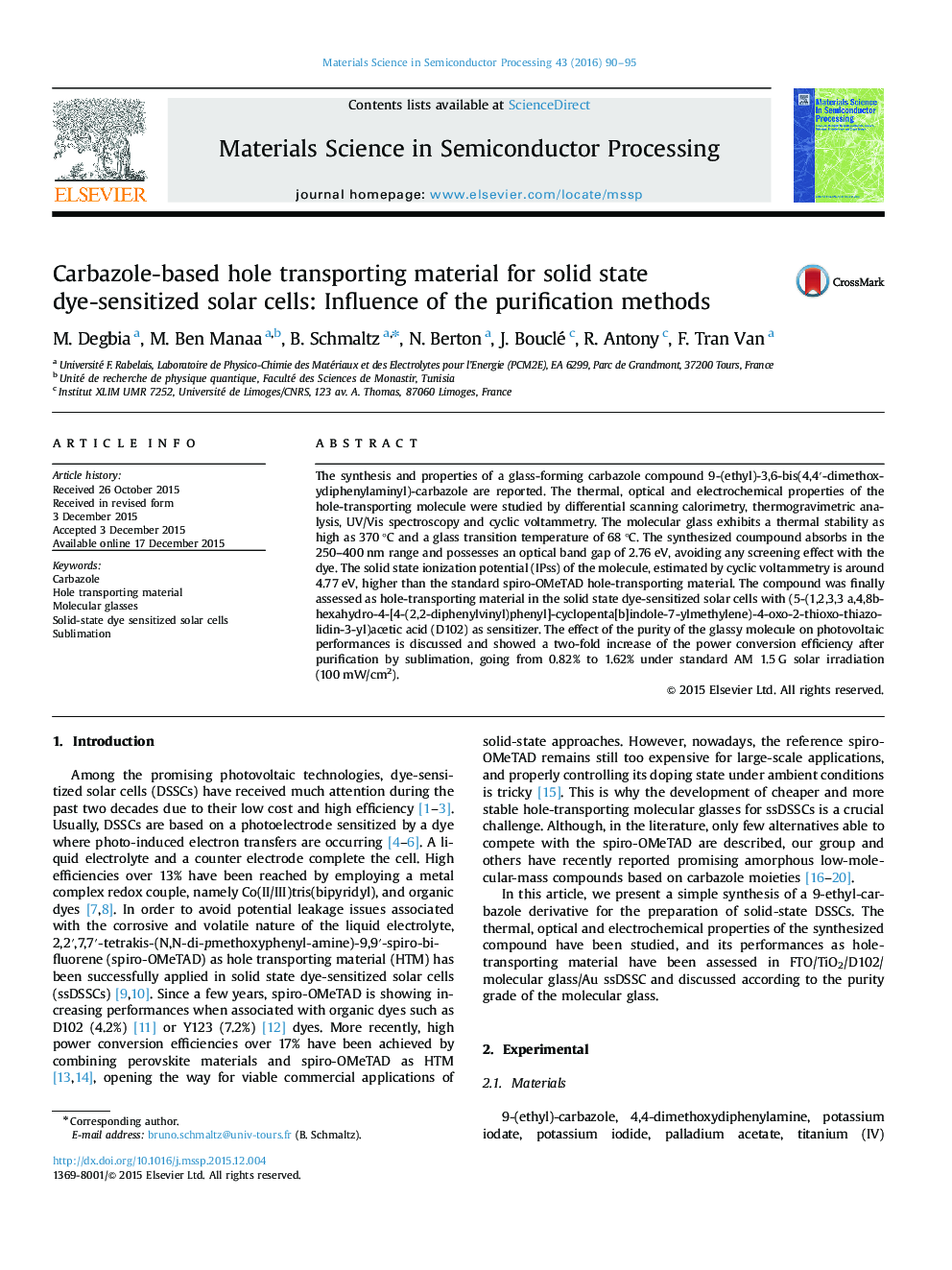| Article ID | Journal | Published Year | Pages | File Type |
|---|---|---|---|---|
| 727925 | Materials Science in Semiconductor Processing | 2016 | 6 Pages |
The synthesis and properties of a glass-forming carbazole compound 9-(ethyl)-3,6-bis(4,4′-dimethoxydiphenylaminyl)-carbazole are reported. The thermal, optical and electrochemical properties of the hole-transporting molecule were studied by differential scanning calorimetry, thermogravimetric analysis, UV/Vis spectroscopy and cyclic voltammetry. The molecular glass exhibits a thermal stability as high as 370 °C and a glass transition temperature of 68 °C. The synthesized coumpound absorbs in the 250–400 nm range and possesses an optical band gap of 2.76 eV, avoiding any screening effect with the dye. The solid state ionization potential (IPss) of the molecule, estimated by cyclic voltammetry is around 4.77 eV, higher than the standard spiro-OMeTAD hole-transporting material. The compound was finally assessed as hole-transporting material in the solid state dye-sensitized solar cells with (5-(1,2,3,3 a,4,8b-hexahydro-4-[4-(2,2-diphenylvinyl)phenyl]-cyclopenta[b]indole-7-ylmethylene)-4-oxo-2-thioxo-thiazolidin-3-yl)acetic acid (D102) as sensitizer. The effect of the purity of the glassy molecule on photovoltaic performances is discussed and showed a two-fold increase of the power conversion efficiency after purification by sublimation, going from 0.82% to 1.62% under standard AM 1.5 G solar irradiation (100 mW/cm2).
